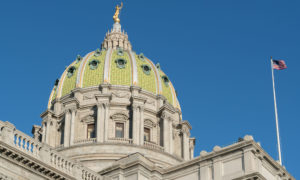More Cannabis Shops Coming To California Post-Election

Thirty-two of 38 local marijuana measures passed on Election Day
The smoke has cleared on the 2020 election, and one thing has come into focus: California’s cannabis multitudes can expect more stores in more corners of the state in the coming months and years than ever before. California is slowly bringing water to its cannabis deserts.
Thirty-two of 38 local marijuana measures passed on Election Day Nov. 3, 2020. The vast majority of the measures allow and tax cannabis businesses locally.
Small, rural, Republican-leaning California towns approved stores, farms, labs, distributors, and kitchens. These holdout towns advanced the work of the once-controversial state legalization initiative, Proposition 64.
California legalization fact box:
- Prop. 64 approved Nov. 8, 2016
- Sales began Jan. 1, 2018
- Number of active storefront licenses today: 715
- Number of active non-storefront (delivery) licenses: 311
- Tax revenue since sales began: $1.45 billion
- Number of jobs, at end of 2019: 39,804
More store optimism
The year’s local vote sweep is another beat in the rhythm of reform—a rhythm so slow you might miss it.
In San Francisco on Oct. 9, the vape brand STIIIZY held a grand opening for its new retail shop in the city’s coveted Union Square downtown shopping district. The store is at 180 O’Farrell Street, between Powell Street and Stockton Street.
K Street Consulting’s Max Mikalonis, a leading statewide lobbyist and licensing expert, is “definitely optimistic” that more retail access is coming to the state. “But I would temper that optimism with the acknowledgment that it’s going to take time for many of these stores to come online.”
California’s lethargic business development pace applies doubly to cannabis. Prop. 64 put cities and counties in the driver’s seat—they can totally ban all cannabis businesses. Most did so at the outset of legalization, creating so-called “cannabis deserts” without any legal outlets for hundreds of miles.
Three years of legal sales convinced skeptics the sky would not fall, said Ellen Komp, deputy director of California NORML. She tracked the local measures in a voter guide for the state’s 482 cities and 58 counties.
“It takes a while for locals to figure out where to zone things. They want to wait and see the process,” she said. “It’s just like the end of alcohol prohibition. There’s still some dry counties in the US.”
To Read The Rest Of This Article On Leafly, Click Here




































